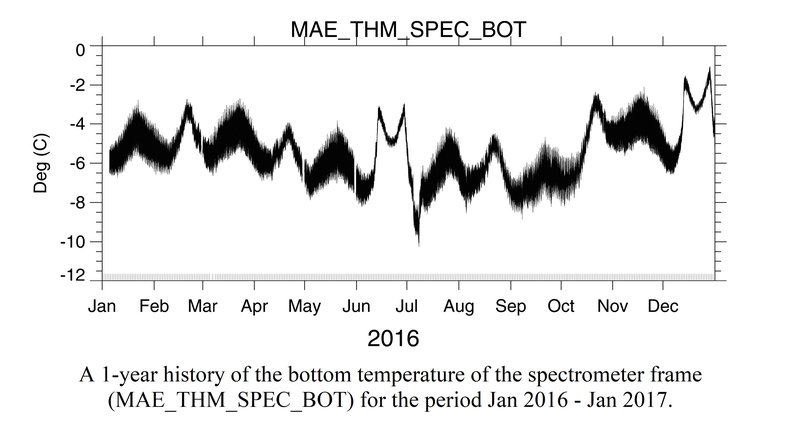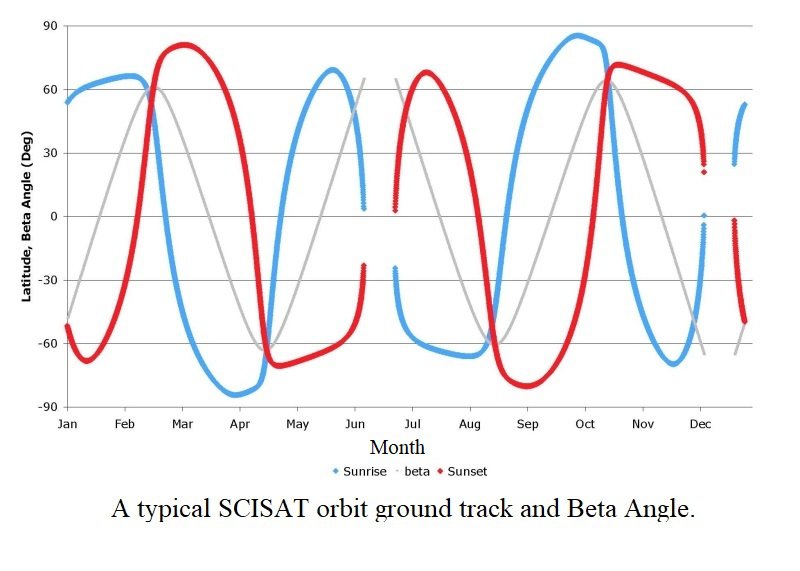There are approximately 90 telemetry points in the MAESTRO instrument for monitoring the performances of mechanical and electronic subsystems, such as temperatures for grating mounts, spectrometer frames, radiator, reticon diodes, pre-amplifiers, etc.; and voltages of power suppliers for various devices.
Temperature telemetries are subject to thermal environment changes. The figure below is a typical telemetry history plot for the entire mission for the telemetry point: MAE_THM_SPEC_BOT, which is the temperature of the bottom of the spectrometer frame.

There is a warming up for 2010 by about 5°C which returns to nominal range for an unknown reason. A decrease in the temperature trend is observed in 2015. This decrease is due to the SCISAT star tracker failing. The star tracker is close enough to the MAESTRO instrument to cause a temperature drop in the instrument overall.
On the daily scale the orbital variation with a period of ~100 min is the dominant factor, which is due to the day/night alternation that the satellite experiences in an orbital cycle.

The temperature telemetry trends on the order of months are affected not only by orbital oscillations but also by beta-angle variations. At high beta-angles the spacecraft is exposed to the sun for most of or even the entire orbit. The beta-angle drift can have the same or even larger thermal impact than orbital oscillations. The orbital variations are on the order of 1.5°C but the beta-angle drift can cause temperature changes at the order of 5°C - 10°C. The period for the beta-angle change is approximately two months. The temperature increase and decrease is associated with the increase and decrease of the beta-angle. As an example, from mid January to mid February the beta-angle and hence the temperature increase and from mid February to mid March it decreases. During the months of June and December the instrument performs an out-gassing orbital maneuver which causes a dip in temperature on the order of 2°C – 3°C. This cycle can be seen in all temperature telemetry.


The temperatures are primarily dictated by the instrument operation and the external environment changes as described and are well within the tolerance range.
